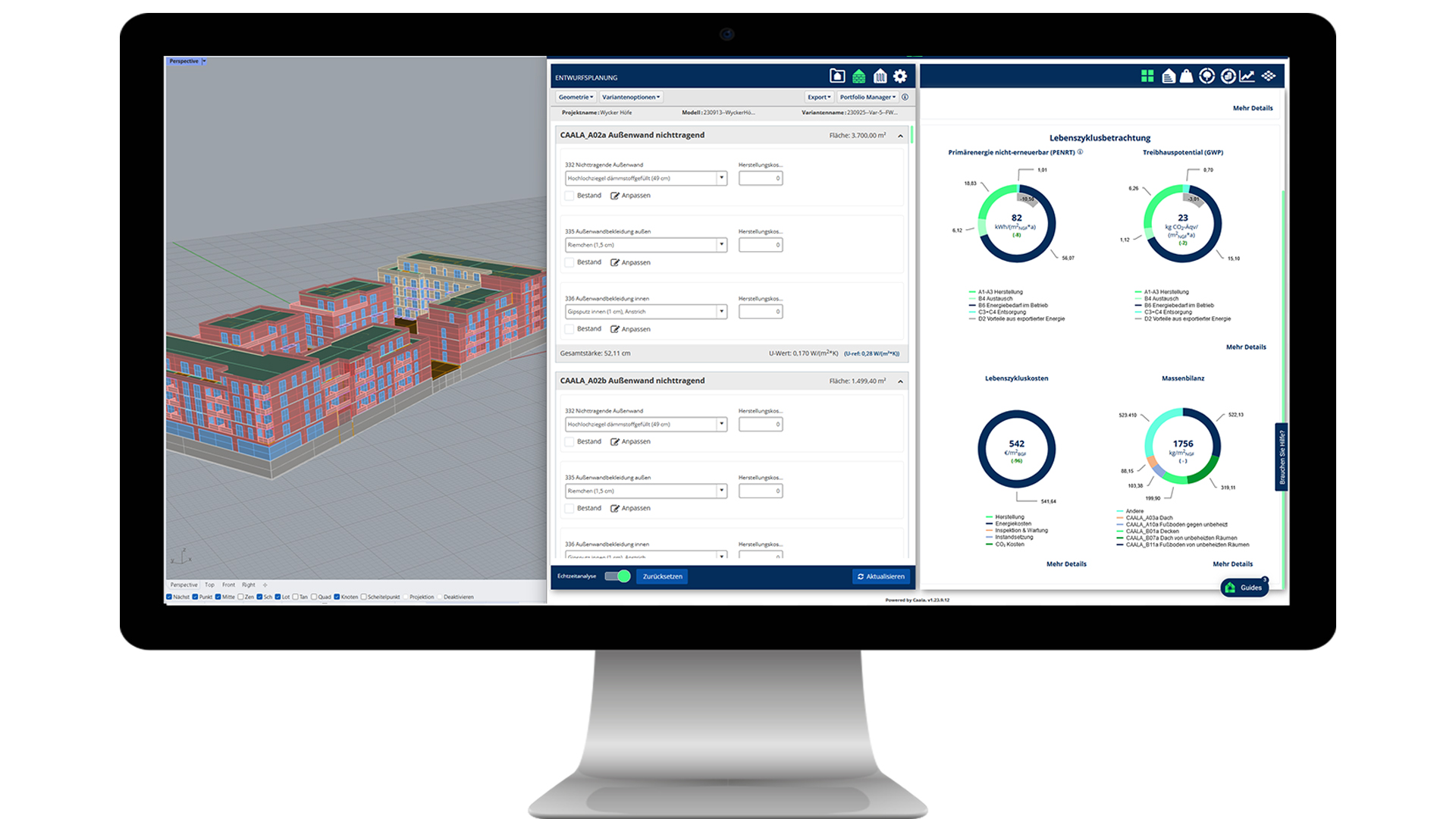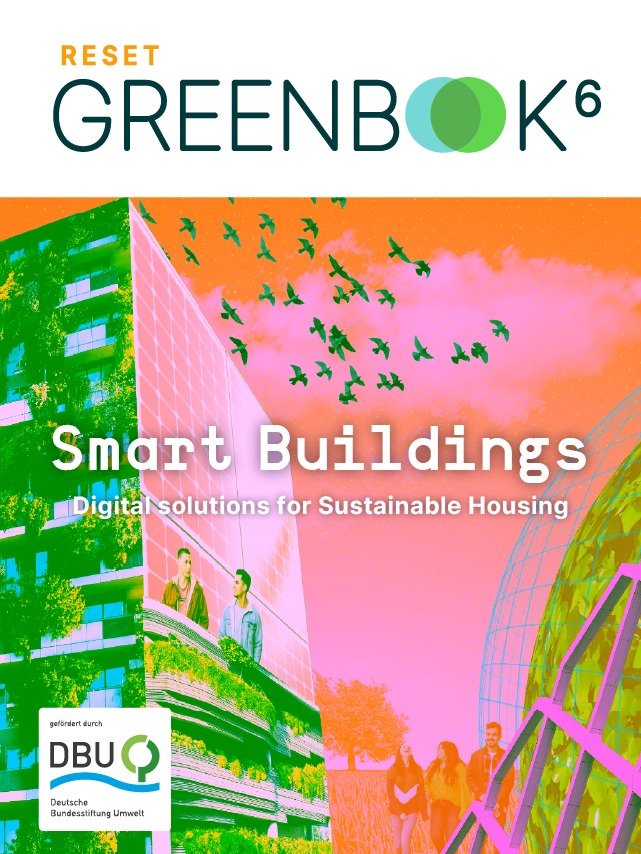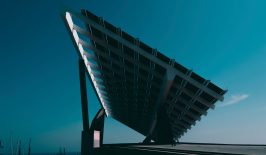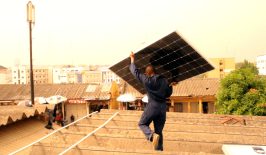Every building constructed today is built to last for many decades. It will witness residents come and go, and be exposed to storms, rain, and sunshine. Its spaces will be heated, cooled, or ventilated every day. Architects and owners have a significant impact on its robustness and environmental footprint during the planning phase, as the building structure, materials used, and heating system determine the energy consumption and CO2 emissions of a building over its entire lifecycle.
So far, buildings are too rarely optimised for a minimal CO2 footprint, which has led to the sector being responsible for approximately 40 percent of all emissions in Germany today. However, to meet the climate goals, the entire sector will need to undergo transformation, building by building
In addition, this issue has significant economic relevance. In recent years, energy prices have risen sharply and are unlikely to fall again quickly. This is even more true for fossil fuels. Therefore, low energy consumption also protects the people living in the houses from high costs.
Why not, therefore, make homes future-ready and construct them to be carbon-neutral today?
Good planning is half the battle
There are now many good examples of sustainable construction, such as in Lerchenweg in Cologne. Soon, several new residential buildings are to be constructed here. Their final appearance has been determined by calculations of CO2 emissions for different construction methods over their entire lifecycle. This assessment considered not only the building materials but also the construction method, the volume of the structure, and energy and heating supply. This resulted in over 300 possible construction variations with varying CO2 emissions, from which one will ultimately be implemented.
The calculations have, for example, demonstrated that a solid wood building with a basement and a heat pump significantly outperforms a steel-reinforced concrete building with an underground garage and gas condensing heating, achieving approximately 42% CO2 savings.
The calculations were performed by CAALA software, just as in numerous other projects aiming to build as sustainably as possible.
The optimal interplay of insulation, glazing, orientation, heating, and ventilation systems is crucial
The fact that the energy consumption and ecological footprint of buildings are still insufficiently considered today can be attributed, on the one hand, to the absence of clear regulations regarding the ecological balance and, consequently, a lack of understanding of the relevance of these aspects. Moreover, planners and architects often lack the necessary knowledge and experience. Even when it is known that geometry, materials, positioning, and building technology influence a building’s energy consumption, many lack the tools to explore different options and their interactions thoroughly.
For this reason, the “Einfach Bauen” project based at TU Munich has relied on simulations to construct houses with minimal energy and resource consumption. The project calculated the environmental impacts and costs of various designs and spatial and technical concepts over the entire lifecycle, taking into account factors like orientation and weather data. As a result, houses were created with intelligent building structures that are not only extremely efficient but also versatile and adaptable for various uses.
The software from the company CAALA is also designed to help optimise energy and ecological aspects during the early design phase. It visualises the CO2 emissions from both operation and construction for each planning variant, thus creating a comprehensive information basis for decision-making.
The basis of the browser-based analysis consists of geometric data, ranging from simple area input to detailed BIM (Building Information Modeling) models. Other parameters that are incorporated into the model because they influence the ecological, energy, and economic lifecycle performance include materiality and system technology, CO2 intensities, and price escalation rates. The model also calculates grey energy.
What is grey energy in buildings?
Grey energy, also known as embodied energy, refers to the amount of primary energy required for the construction of a building. This includes the energy needed for extracting materials, manufacturing and processing building components, transporting people, machinery, building components, and materials to the construction site, installing building components in the structure, and disposal.
By interconnecting all relevant parameters, the software makes it visible how changes in individual parameters affect the entire lifecycle.
Currently, CAALA is not only used in sustainable construction projects but also by institutions like the Bauhaus University Weimar, ETH Zurich, and RWTH Aachen for education and research projects. However, digital-assisted planning can increase energy efficiency and reduce emissions not only in new construction but also in renovation projects. There is a high demand for such solutions in this context.
Planning refurbishments with a 3D model
“Currently, existing buildings are primarily responsible for a significant portion of the sector’s CO2 emissions. Therefore, we must ‘focus on the building stock and reduce emissions from building operations,’ as emphasised by Sibyl Steuwer of the Buildings Performance Institute Europe (BPIE). However, as Steuwer points out, renovation roadmaps that align with a building’s lifecycle and clearly demonstrate how decarbonisation measures can be cost-efficient and tenant-friendly are often lacking.
A virtual solution for this is also provided by CAALA’s software. It enables a semi-automated approach to calculate the energy, environmental, and economic impacts of various renovation measures while considering the lifecycle. Using OpenStreetMap data, a 3D model of the existing building is created, which can be further specified by entering additional data, including information about the building envelope, technical systems, and hot water demand. Based on the model, renovation measures such as thermal insulation, window and heating system replacement, or PV installations can be depicted, and their effects and interactions can be visualised. This comprehensive approach allows for the determination of both the embedded emissions and emissions resulting from the renovation measures, which can be compared to the reduction in emissions from operation. Consequently, CAALA’s solution can help alleviate uncertainties for property owners and, in the best case, expedite renovation measures.”
Buildings are a CO2 heavyweight: the construction, heating, cooling and disposal of our homes accounts for around 40 percent of Germany’s CO2 emissions. We will only achieve our climate goals if these emissions are massively reduced.
But how can we achieve the sustainable transformation of buildings and what role do digital solutions play in this? The RESET Greenbook provides answers: Building transformation – intelligently transforming houses and neighbourhoods.
A similar approach is taken by the BIM4REN project, which focuses on developing user-friendly tools and services for an adaptable and rapid renovation process. Their primary application is serial renovations to accelerate the renovation rate and quickly reduce emissions in the building sector. The key lies in the standardisation of processes. Even though each building is unique, the processes for renovation remain the same. ‘A continuous digital process is enormously helpful, meaning that the planning is entirely digital,’ emphasised Sibyl Steuwer.
Serial refurbishment
“Serial refurbishment” means that facade and roof elements or building systems, such as heat pump modules, are prefabricated off-site and then assembled on-site. The high degree of prefabrication significantly reduces the time required compared to traditional renovation methods.
Besides CAALA, there are other providers of planning software, but they have not really arrived on the German market yet. Most of the applications are only used in the context of individual pilot projects. “There are surveys that show that more companies are using such planning tools, but compared to other European countries, Germany is far behind,” Steuwer laments.
However, the demands for sustainability in the real estate and construction sector are increasing, says Dr. Samuel Ebert, COO at CAALA. This is leading to a growing demand for planning software. “An increasing number of stakeholders are realising that robust ecological balance data will become a standard feature for buildings in the future, much like the energy certificate today. Both in new construction and in existing buildings, awareness is growing that energy efficiency is not the only factor. We have to explain terms like ‘grey emissions’ and ‘life cycle analysis’ far less today than a few years ago. In the current challenging market situation, programs like the KfW ‘Climate-Friendly New Building’ are also becoming more relevant, as they, for the first time, go beyond the familiar efficiency house standards to consider greenhouse gas emissions over the building lifecycle.
Currently, the role of lifecycle analysis and other crucial measures for a sustainable construction industry is not yet anchored in German legislation. However, there are developments at the EU level: The revision of the EU Buildings Directive (EPBD), in which the obligation for lifecycle analysis could be established, is currently under negotiation. Additionally, the Corporate Sustainability Reporting Directive (CSRD) will compel companies to engage substantively with the environmental impacts of their activities and products, disclose them, and strive for improvements. All of this is likely to increase the pressure on the construction industry and, consequently, drive the adoption of digital solutions.
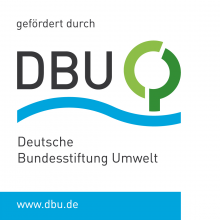
Dieser Artikel gehört zum Dossier „Gebäudewende – Häuser und Quartiere intelligent transformieren“. Das Dossier ist Teil der Projekt-Förderung der Deutschen Bundesstiftung Umwelt (DBU), in deren Rahmen wir vier Dossiers zum Thema „Mission Klimaneutralität – Mit digitalen Lösungen die Transformation vorantreiben“ erstellen.

